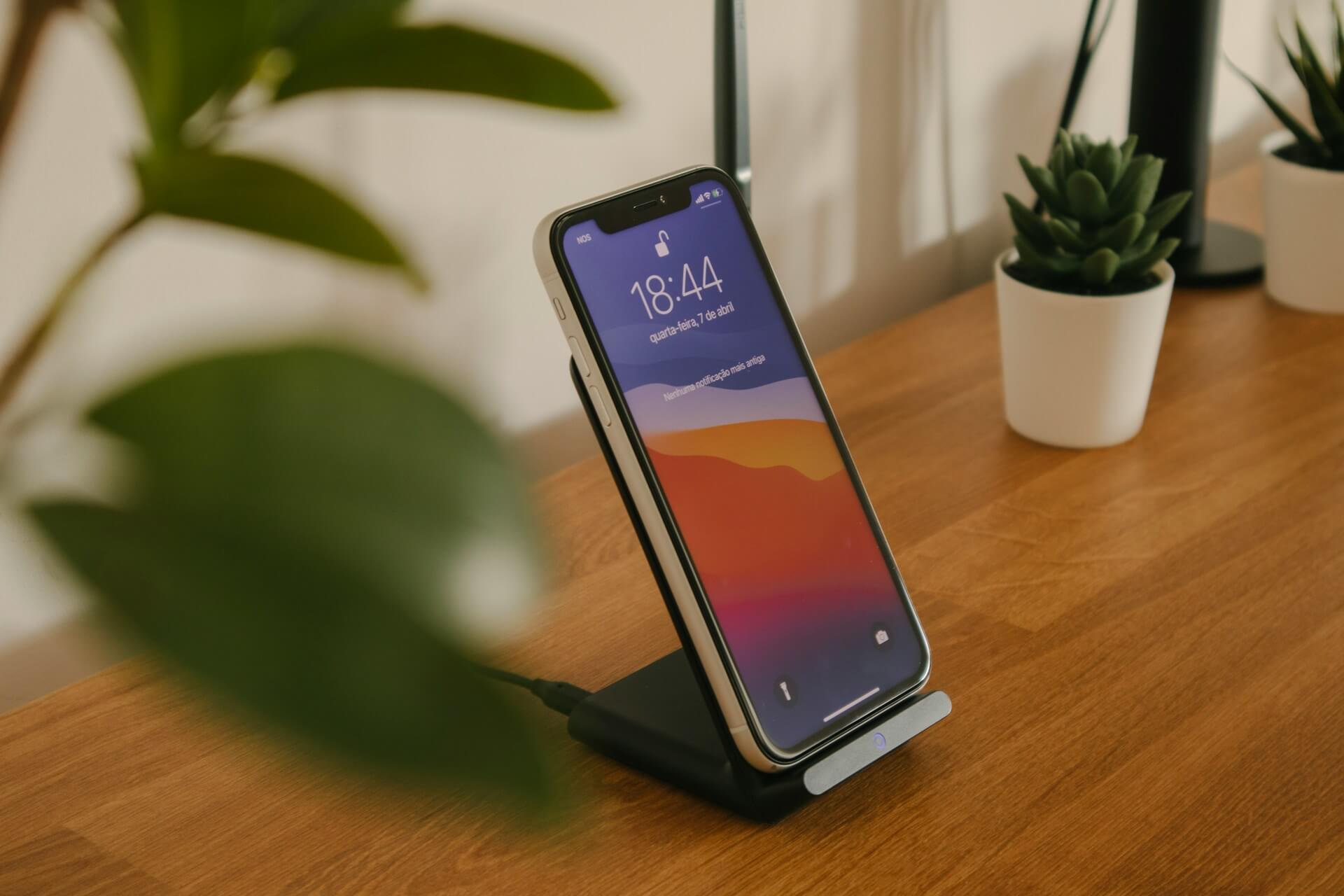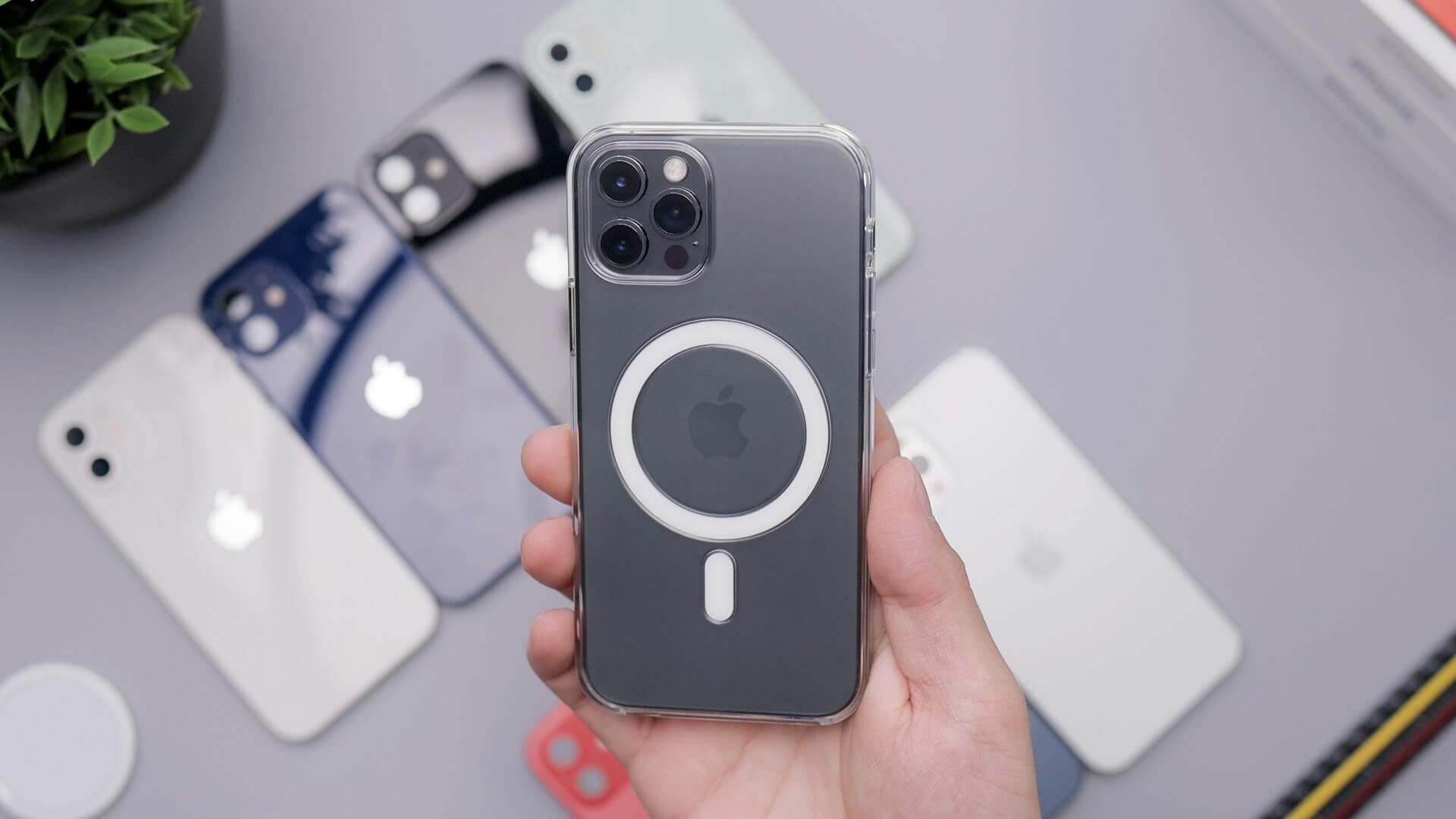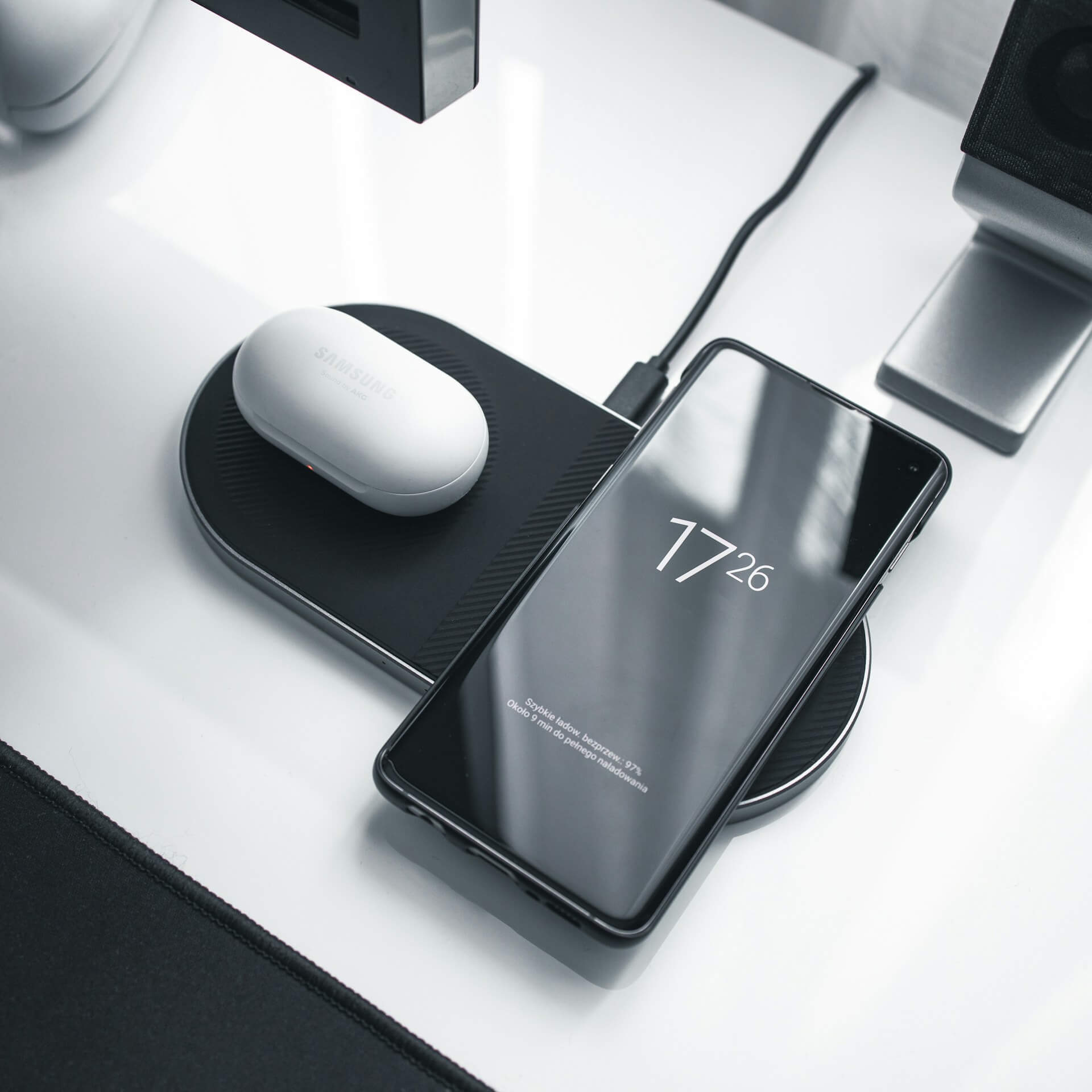
Wireless charging has been around for a while, but MagSafe changed the game with its innovative approach. Although the two might seem similar at first, these two technologies are more distinct than you might think.
So, what’s the difference between MagSafe and wireless charging? Find out everything you need to know about MagSafe vs. wireless chargers with this guide and discover which one is best for you.
MagSafe vs. Qi Wireless Charging: What Is MagSafe?
MagSafe charging is a wireless charging technology developed by Apple specifically for iPhone 12 and later models. The charging process might look simple at first glance, but there’s a lot more going on under the hood of a MagSafe charger vs. a wireless charger.
The distinguishing feature of MagSafe vs. wireless charging is the use of magnets. MagSafe uses a combination of magnets and a charging coil built into the phone to charge it. Both the iPhone and the MagSafe charger have wireless charging coils. These coils create an electromagnetic field that transfers power wirelessly to your phone's battery when aligned.
Here’s what that means for you:
- Better Alignment: The main feature here is the ring of magnets placed around the iPhone's charging coil. These magnets align perfectly with a MagSafe charger, securely snapping your phone into place for optimal charging.
Accessibility is a notable advantage of MagSafe vs. wireless charging. No more fumbling with cables or dealing with misaligned coils on standard wireless chargers. - Faster Speeds: This precise alignment allows for more efficient power transfer, enabling faster wireless charging at up to 15 watts (for iPhone 13 mini and 12 mini, it's 12 watts) compared to standard wireless chargers. This wattage is expected to increase even further as transfer tech and heat resistance improve in MagSafe vs. wireless chargers.
Is MagSafe Just Used For Charging?
Not at all. A wider selection of accessories is a huge difference between MagSafe and wireless charging.
Power Solutions
Power solutions are one of the most common applications of MagSafe vs. standard wireless charging technology:
- Power Banks: High-capacity MagSafe-compatible power banks can charge your iPhone and other devices simultaneously. They're ideal for extended trips or situations where you need to power multiple devices.
- Battery Cases: These battery cases attach magnetically to the back of your iPhone, providing extra juice when you're on the go.
Cases

MagSafe-compatible cases help you get where you’re going in style and comfort. Their design integrates magnets seamlessly, allowing you to attach other MagSafe accessories like wallets and power solutions seamlessly without needing to remove the case.
Mounts
MagSafe car mounts securely hold your iPhone in place on your car's dashboard. This feature of MagSafe chargers vs wireless chargers allows for easy access to navigation apps and hands-free calling while keeping your phone visible and within reach.
mophie’s wireless charging vent mount is a popular choice here, providing maximum charging speed while securely holding your phone in place.
MagSafe vs. Qi Wireless Charging: What’s the Catch?
MagSafe and Qi wireless charging both offer cable-free power, but they work differently and come with trade-offs. Qi chargers rely on simple inductive charging, requiring precise alignment between the device and the charging pad. This can make charging inefficient if the phone isn’t placed correctly. MagSafe, on the other hand, uses a ring of magnets to snap the charger into perfect alignment, ensuring a more reliable connection and faster charging speeds.
However, MagSafe chargers are generally more expensive, and while they offer better efficiency, they still generate heat and are not as fast as a wired connection. Qi charging, though slower and less secure in alignment, is more widely compatible with various devices beyond Apple’s ecosystem. So which should you go with? MagSafe vs. Qi wireless charging? Ultimately, if you want a seamless, optimized experience for an iPhone, MagSafe is the way to go, but for broader compatibility and affordability, Qi charging remains a solid choice.
MagSafe: Pros and Cons
|
Pros |
Cons |
|
Faster charging speeds |
Limited compatibility (iPhone 12 onwards) |
|
Secure magnetic connection |
Higher cost |
|
Accessory Ecosystem |
|
|
One-hand operability |
MagSafe vs. Wireless Charging: What’s The Difference?
MagSafe and Qi wireless charging both eliminate the need for cables but differ in performance and design. Qi, the standard for most wireless chargers, uses inductive power transfer, which requires precise alignment to avoid inefficiency and slower charging. MagSafe improves on this by integrating magnets that automatically align the charger, reducing energy loss and enabling faster speeds. While it offers a more reliable connection and better performance, MagSafe comes with a higher price tag and is limited to Apple devices, whereas Qi charging is more affordable and works with a wider variety of gadgets.
MagSafe Chargers vs. Wireless Chargers: Where Wireless Charging Shines
MagSafe generally performs better than Qi wireless charging across the board, but there are a few advantages to wireless charging that are worth considering.
- Cheaper: Due to the broader competition in the Qi wireless charger market, Qi chargers are generally more affordable than MagSafe chargers.
This can be a significant advantage if you need a budget-friendly wireless charging solution. That said, MagSafe’s cost vs. wireless charging has decreased since its introduction due to increasing adoption.
- Compatibility: Qi wireless charging is the widely adopted standard for wireless charging. This compatibility is a key advantage of wireless chargers vs. MagSafe. Many devices from various manufacturers, including Android smartphones, Samsung Galaxy devices, and even some wireless earbuds, support Qi charging.
This also means that a single Qi charger can juice up multiple devices at once. For instance, mophie’s 4-in-1 wireless charging mat can simultaneously charge up to 4 devices.

The MagSafe vs. wireless charging debate might seem moot since MagSafe is a form of wireless charging, but the two also differ in many ways.
- Accessories: MagSafe's magnets extend its functionality beyond charging. They allow for accessories like wallets, car mounts, battery packs, and more, all leveraging the magnetic connection for easy attachment and additional features.
- Integration: MagSafe’s integrated magnets attract and perfectly align the magnets embedded within your phone for a seamless experience. This ease of use marks a difference between MagSafe and wireless charging.
- Charging Efficiency: Traditional wireless chargers rely solely on the user placing their device on the charging pad. Even slight misalignments between the charging coils in the phone and the charger can significantly reduce charging efficiency.
The improved alignment ensured by MagSafe goes a long way toward avoiding these inefficiencies and guaranteeing better power transfer.
Qi Wireless Chargers: Pros and Cons
|
Pros |
Cons |
|
Universal compatibility |
Less power efficient compared to MagSafe |
|
Cheaper than MagSafe |
Alignment issues |
|
Fewer reliable accessories |
MagSafe vs. Qi Wireless Charging: Supercharge Your Phone
MagSafe’s convenience and powerful charging speed make it an easy choice for most iPhone users. From its useful accessories to one-hand operability, there’s just no going back.
Experience the best in MagSafe charging with mophie, an industry leader in wireless charging. From powerful multi-device chargers to MagSafe-compatible power banks, mophie empowers your phone and lifestyle with best-in-class design and power efficiency.
